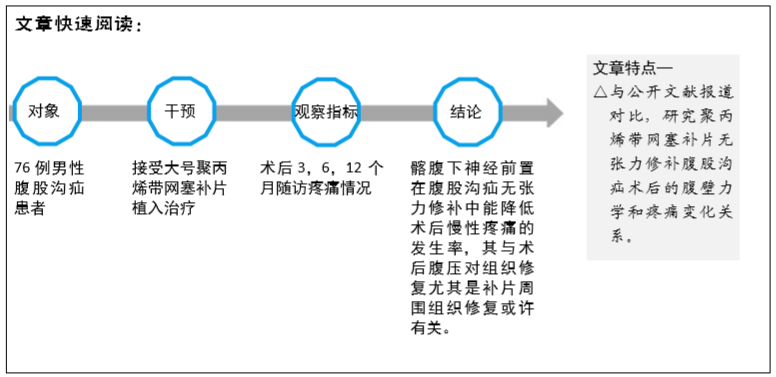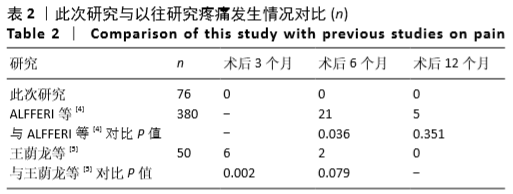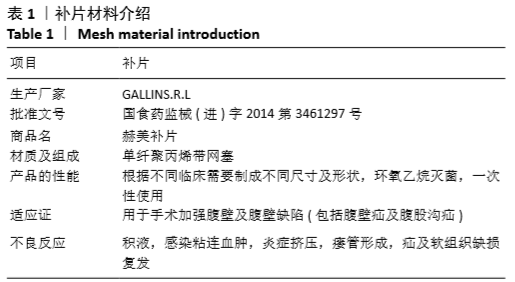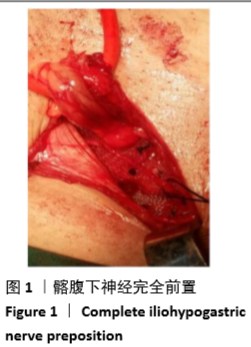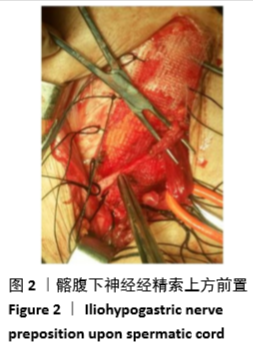[1] 中华医学会外科学分会疝和腹壁外科学组.成人腹股沟疝、股疝和腹部手术切口疝手术治疗方案(2003年修订稿)[J].中华外科杂志, 2004,42(14):834-835.
[2] AASVANG E, KEHLET H. Surgical management of chronic pain afteringuinal hernia repair.Br J Surg.2005;92(7):795-801.
[3] REINPOLD WM, NEHLS J, EGGERT A. Nerve management and chronicpain after open inguinal hernia repair: a prospective two phase study.Ann Surg.2011;254(1):163-168.
[4] ALFIERI S, ROTONDI F, DI GIORGIO A, et al. Influence of preservationversus division of ilioinguinal, iliohypogastric, and genital nervesduring open mesh herniorrhaphy: prospective multicentric study of chronic pain.Ann Surg.2006;243(4):553-558.
[5] 王荫龙,张新,谢加东.预防性切断髂腹下神经对Lichtenstein 手术术后疼痛影响的分析[J].外科理论与实践,2010,15(6):627-631.
[6] GAGLIESE L, WEIZBLIT N, ELLIS W, et al. The measurement of postoperative pain: a comparison of intensity scales in younger and older surgical patients.Pain.2005;117(3):412-420.
[7] REUBEN B, NEUMAYER L. Surgical management of inguinal hernia.Adv Surg.2006;40:299-317.
[8] CALLESEN T, BECH K, KEHLET H. Prospective study of chronic pain after groin hernia repair.Br J Surg.1999;86:1528-1531.
[9] 鲍修增,洪洋 医用物理学[M].北京:人民卫生出版社,2002:10-19.
[10] 顾建华,赵欣,郭仁德,等.老年人腹股沟疝的经腹直肌入路腹膜前间隙无张力修补术[J].中华普通外科杂志,2014,29(7):552-553.
[11] 张本斯,王凡,叶纯,等.腹股沟神经卡压征的应用解剖[J].中国临床解剖学杂志,2003,21(4):336-338.
[12] 毕建威,张少波,魏国,等.腹股沟疝术后顽固性疼痛的处理[J].外科理论与实践,2002,7(6):459-461.
[13] 何鹏飞,郑文武.髂腹下神经前皮支的解剖及临床应用[J].腹部外科,2010,23(2):128.
[14] 汤冶平,苏远航,陈双,等.主动腹膜切开在完全腹膜外疝修补术中的应用[J/CD].中华疝与腹壁外科杂志电子版,2013,7(3):210-211.
[15] CROMBIE IK, DAVIES HT, MACRAE WA. Cut and thrust: antecedent surgery and trauma among patients attending a chronic pain clinic.Pain. 1998;76(1-2):167-171.
[16] 王进,安伟德.无张力疝修补术后16例补片感染的临床分析[J].中华疝和腹壁外科杂志(电子版),2010,4(4):355-360.
[17] 侯利民,姜洪池.腹股沟疝的治疗进展[J].中国实用外科杂志,2001, 21(2):113-115.
[18] SIMONS MP, AUFENACKER T, BAY-NIELSEN M, et al. European Hernia Society guidelines on the treatment of inguinal hernia in adult patients. Hernia.2009;13(4):343-403.
[19] AMID PK, HIATT JR. New understanding of the causes and surgical treatment of postherniorrhaphy inguinodynia and orchalgia.J Am Coll Surg.2007;205(2):381-385.
[20] 王爱光,吕传鹤,蒋林哲.腹股沟疝无张力修补术后慢性疼痛原因分析[J].中华疝和腹壁外科杂志(电子版),2011,5(2):187-192.
[21] MCCORMACK K, SCOTT NW, GO PM, et al. Laparoscopic techniques versus open techniques for inguinal hernia repair.Cochrane Database Syst Rev.2003;(1):CD001785.
[22] 李健文,郑民华.腹腔镜腹股沟疝修补术的操作要点[J].外科理论与实践,2008,13(6):516-519.
|
